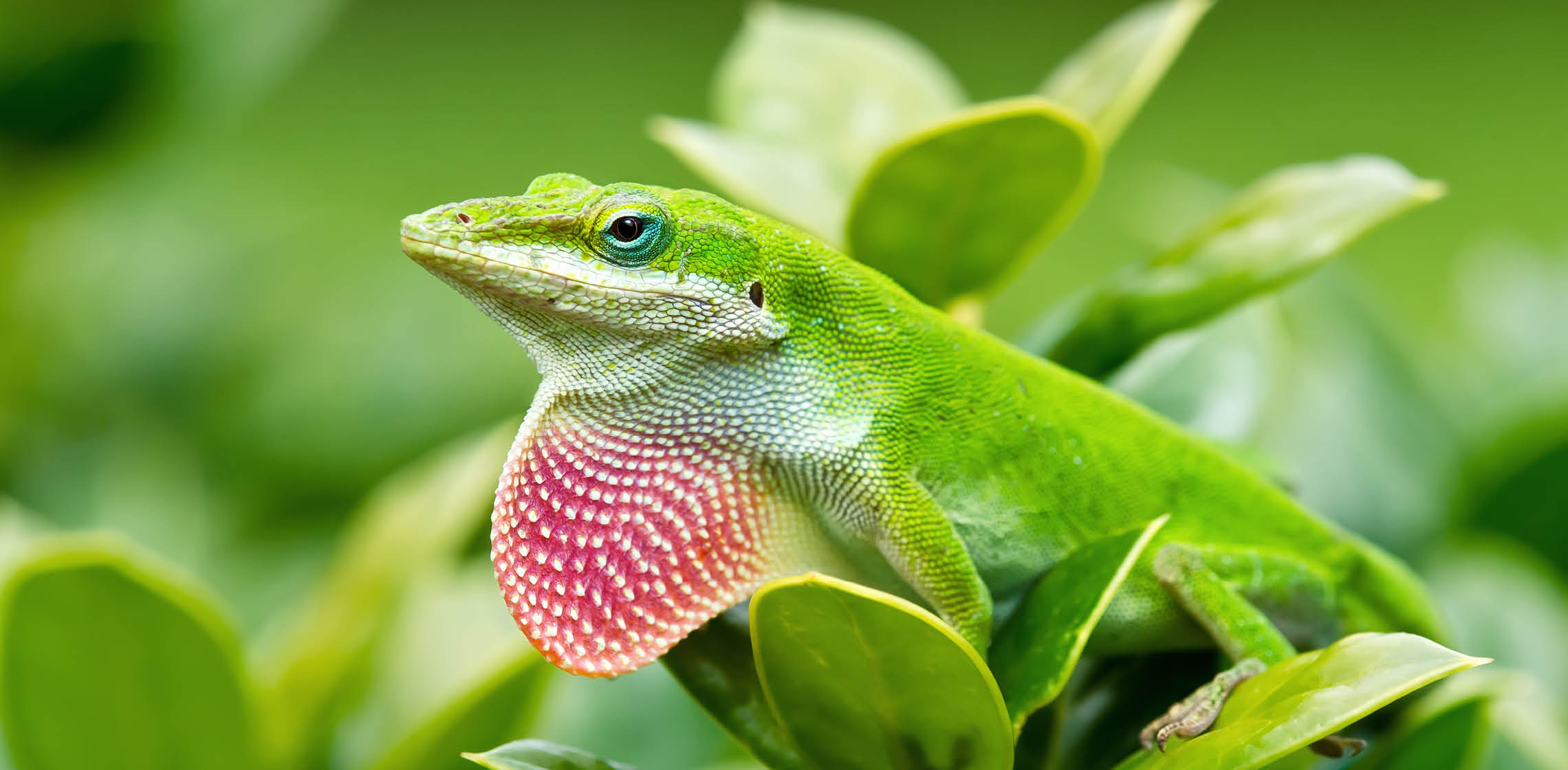Location in Zoo
Geographic Range
Scientific Information
Lifestyle and Lifespan
Conservation

Anoles are streamlined with long tails, long legs and toes, and a narrow head. A. carolinensis is 5 to 8 inches in length and has a pointed nose and round tail. It is primarily bright green with a pale belly. Males are slightly larger than the females, with a larger head, a pink throat flap, or dewlap, that expands when displaying, and two enlarged post-anal glands. It has a small dorsal crest immediately behind the head that is only visible during threat displays. Even though they're called 'Green Anoles,' their coloring ranges from shades of brown to green or grey. Their coloring is dependent on many factors, it is most often dependent upon temperature and excitation, such as increased activity or competition. Darker brown and black colors typically signal cold or stressed conditions.
Sexual Dimorphism. Physical differences also are common between males and females. Females often have a line that runs along their dorsal surface, from their neck down to their back, ending before their tail begins. Most males have dewlaps that extend from the ventral side (underside) of their neck. Dewlaps are rarely seen in females. The dewlap is commonly pinkish in color and thought to be used by males to increase visibility as they court females. Displaying the dewlap may also represent a competitive status between males; in these cases, dewlap displays are usually related to territory boundary disputes.
Large adhesive toe pads enable them to walk on vertical surfaces. This lizard is capable of rapid but limited color changes from green to gray or brown, depending on mood and background. A basking anole is typically brown; fighting males turn green.
Native to neotropical and nearctic regions.
Trees and shrubs of southeastern United States from Virginia to the Florida Keys and west to central Texas and Oklahoma. Also found on Cuba and islands in the Caribbean.
Carnivorous. Insects and spiders.
Secondary consumer.
Diurnal. Mostly arboreal, but frequently dwell near human habitation.
Males are extremely territorial and exert their dominance by flaring dewlaps, bobbing heads, erecting a dorsal crest and posturing to enlarge their image.
During the breeding season, which extends from spring to fall, they use their dewlaps to entice females. Single eggs are laid every two weeks in leaf litter or loose soil. Young hatch in 5-7 weeks. The sexual display behavior of green anoles is very specific. Members of almost every mating pair live within each other's territories. To attract the attention of females, males bob their heads up and down and extend their dewlaps. Not all females are receptive to male courtship; some deny them and others exhibit the same behavior as males but then arch their neck to inform the males they are receptive to mating.
Once the young hatch from their eggs they resemble adults in coloration and pattern, but are only 23-25 mm long. Green anoles have determinate growth; they grow at a relatively constant rate from hatching to adulthood. Hatchlings develop into juvenile males and females without any parental investment.
Not Endangered. Listed as a species of Least Concern by IUCN.
Anoles make up the largest genus of the iguanids with more than 110 species found in the West Indies alone, plus more in Central and South America. However, A. carolinensis is the only anole found in North America. It is known as the Common Anole or the American Chameleon (although it is not a chameleon)!
This lizard is an agile, darting creature and can fall from great heights without hurting itself.